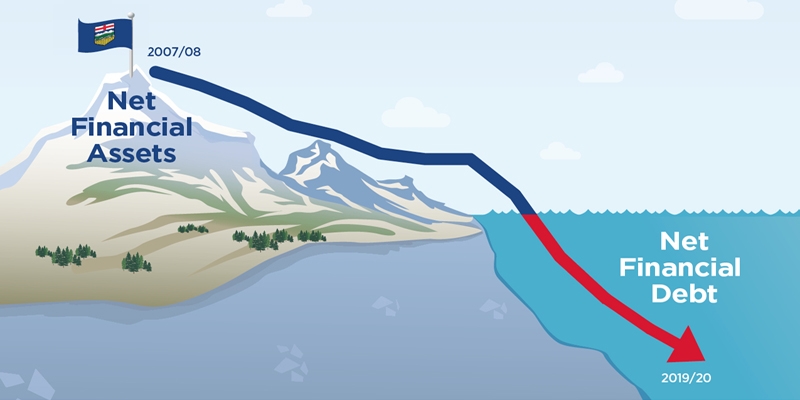How Much, How Fast? Estimating Debt Accumulation in Alberta Through 2019/20

For the first time since the 1999/2000 fiscal year, the government of Alberta is poised to reach a negative net financial asset position in the 2016/17 fiscal year, down from a $35 billion net financial asset position in 2007/08.
It is clear that the province will return to a net debt position in 2016/17, but an important question remains: how much debt will Alberta actually accumulate in the next few years? This report documents the recent deterioration in Alberta’s net financial asset position over time, and estimates how much net debt the province could accumulate in the years ahead under a range of scenarios.
Currently, government forecasts suggest that Alberta’s net debt will reach $19.8 billion by 2019/20. However, these forecasts likely understate the amount of debt Alberta will accumulate in the years ahead.
There are two important sets of risks to the government’s fiscal plan. The first is that Alberta’s revenue outlook has weakened considerably since the publication of the government’s October 2015 budget. The prospect of reduced revenue rightly received considerable attention in recent months, given that lower-than-projected revenues in the years ahead could cause the province’s debt to increase significantly faster than is currently projected.
This paper, however, makes a new contribution to public discourse on these issues by focusing primarily on another set of risks that have received much less attention—those found on the spending side of the ledger. Specifically, this paper analyzes the extent to which Alberta’s debt will grow faster than currently expected if the government fails to restrain spending in the years ahead.
These risks are deserving of careful attention because they are, to a much greater extent than revenue, under the government’s control. Regardless of whether the government’s current revenue projections materialize, the government’s spending choices in the years ahead will play an important role in determining how quickly the province acquires debt.
The budget calls on the government to restrain spending growth to significantly less than the rate of inflation plus population, less than the rate at which it has increased spending in recent years, and less than the rate of economic growth. This paper considers the implication for Alberta’s pace of debt accumulation if the government does not adhere to these spending targets.
The paper examines three scenarios where spending diverges from budget plans. In the first alternative scenario, program spending increases by 3.9 percent annually, in line with the projected average increase in population growth plus inflation. That scenario would result in the province accumulating $7.0 billion more in net debt than it currently expects by 2019/20, when the province’s net debt would stand at $26.8 billion.
The second scenario assumes that program spending increases at the same average rate as it did in the past five fiscal years, 3.8 percent. In that case, the provincial government’s net debt would be $6.2 billion larger than it currently expects by 2019/20, totalling $26 billion.
Finally, the third scenario assumes that program spending increases at the same rate as GDP growth, which is expected to be 4.7 percent annually. In that scenario, the province’s net debt will be $11.3 billion larger than would be the case if spending targets were met, resulting in total net debt of $31.1 billion in 2019/20.
Because the Minister of Finance recently announced that the deficit for 2016/17 could be $5 billion greater than projected in the budget, the paper also considers the impact of a one-time revenue loss of $5 billion in 2016/17. This is likely a conservative estimate, given that further revenue losses could occur in future fiscal years.
Authors:
More from this study
Subscribe to the Fraser Institute
Get the latest news from the Fraser Institute on the latest research studies, news and events.




